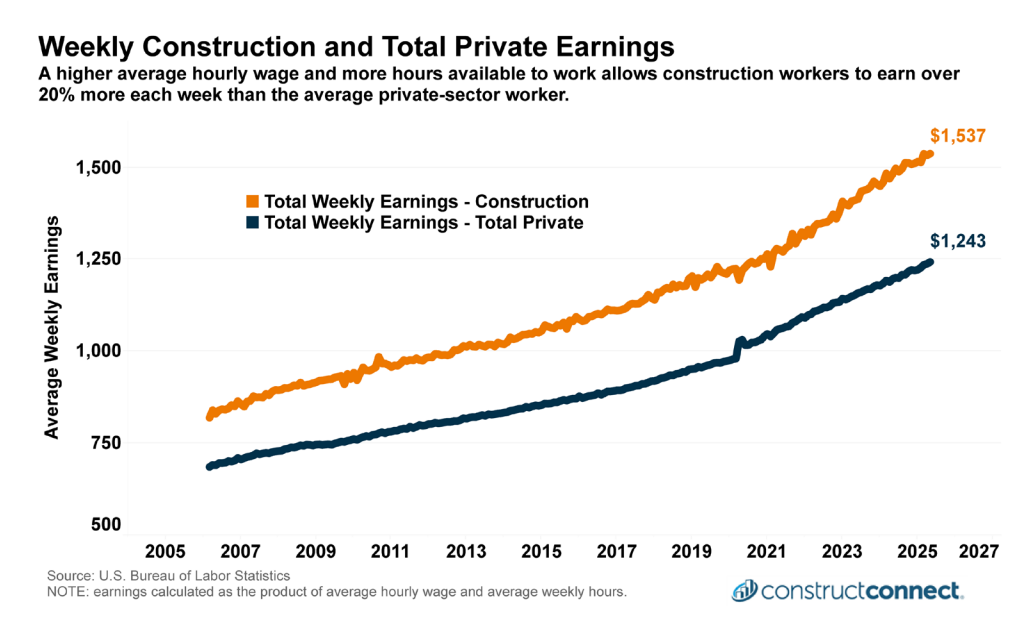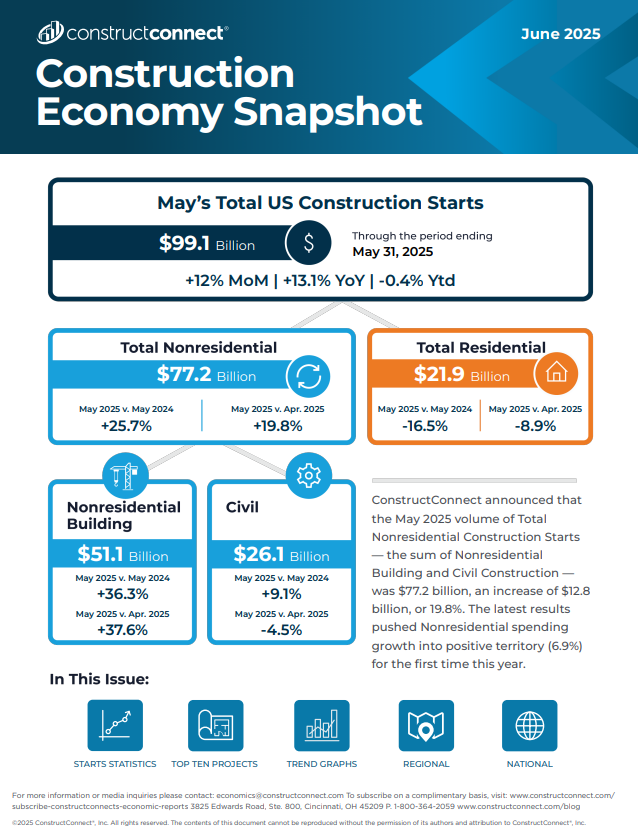KEY POINTS
-
Construction job growth slowed sharply, averaging just over 5,000 new jobs per month from March to May, down from 14,400 monthly in the second half of 2024.
-
Residential sub-trades lost 22,000 jobs, marking a 2% decline since September 2024. Total employment fell to 2.38 million.
-
Construction workers earned a 24% weekly pay premium, averaging $1,537 compared to $1,243 in the private sector, driven by higher wages and longer average weekly hours.
Construction Job Growth Drops
Total construction employment has slowed noticeably since February. From March through May, the average monthly construction job creation rate was just over 5,000, a steep decline from the 14,400 average monthly jobs added during the second half of 2024.
The slowdown is concentrated in the residential sub-trades, which shed 22,000 jobs over the three months. Meanwhile, other construction labor segments have posted gains:
-
Nonresidential sub-trades: Added 20,000 jobs
-
Residential building: Added 9,000 jobs
Residential Construction Sub-Trades Face Losses
Residential sub-trades employment peaked at 2.42 million in September 2024, but by the end of May 2025, the workforce dropped to 2.38 million—a 2% decline, totaling 40,000 lost jobs. This sharp contraction mirrors declines last seen during the Great Recession, excluding COVID-related fluctuations.
Continuing immigration constraints, which affect labor supply, are contributing to the slowdown. An estimated 15% of U.S. construction workers are unauthorized, and tightening policies continue to limit workforce growth.

Weekly construction wages versus private sector pay give the average construction worker a $294 weekly pay premium, or 24% higher earnings than the typical private-sector employee. Image: ConstructConnect
Construction Wages Outpace Private Sector Pay
Despite job losses, construction wages remain strong. In May:
In comparison, the total private sector averaged:
-
Hourly wage: $36.24
-
Weekly hours: 34.3
-
Weekly earnings: $1,243
This gives the average construction worker a $294 weekly pay premium, or 24% higher earnings than the typical private-sector employee.
Read the Construction Economy Snapshot for more details on construction labor, trends, and regional analysis.

